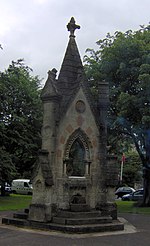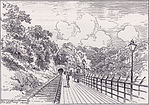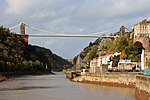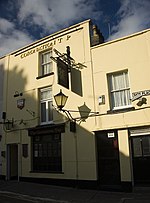Engineers House
Buildings and structures in Clifton, BristolCountry houses in BristolCulture in BristolGrade II* listed buildings in BristolGrade II* listed houses ... and 2 more
Houses completed in 1831Use British English from February 2023

The Engineers House is a historic building, previously known as Camp House, on The Promenade, Clifton Down, Bristol, England. It has been designated as a Grade II* listed building.It was built in 1831 by Charles Dyer for Charles Pinney, who became mayor of Bristol, serving during the Reform Bill riots of 1831.The neoclassical two-storey limestone building has a symmetrical front in the centre of which is a pedimented portico with tuscan on ionic columns with a balcony above.It is now used as offices, a training centre and a conference venue. In 2015 it achieved a green charter mark for the way in which energy and waste are managed to reduce the carbon footprint of the building.
Excerpt from the Wikipedia article Engineers House (License: CC BY-SA 3.0, Authors, Images).Engineers House
Geographical coordinates (GPS) Nearby PlacesShow on map
Geographical coordinates (GPS)
| Latitude | Longitude |
|---|---|
| N 51.45856 ° | E -2.625938 ° |











